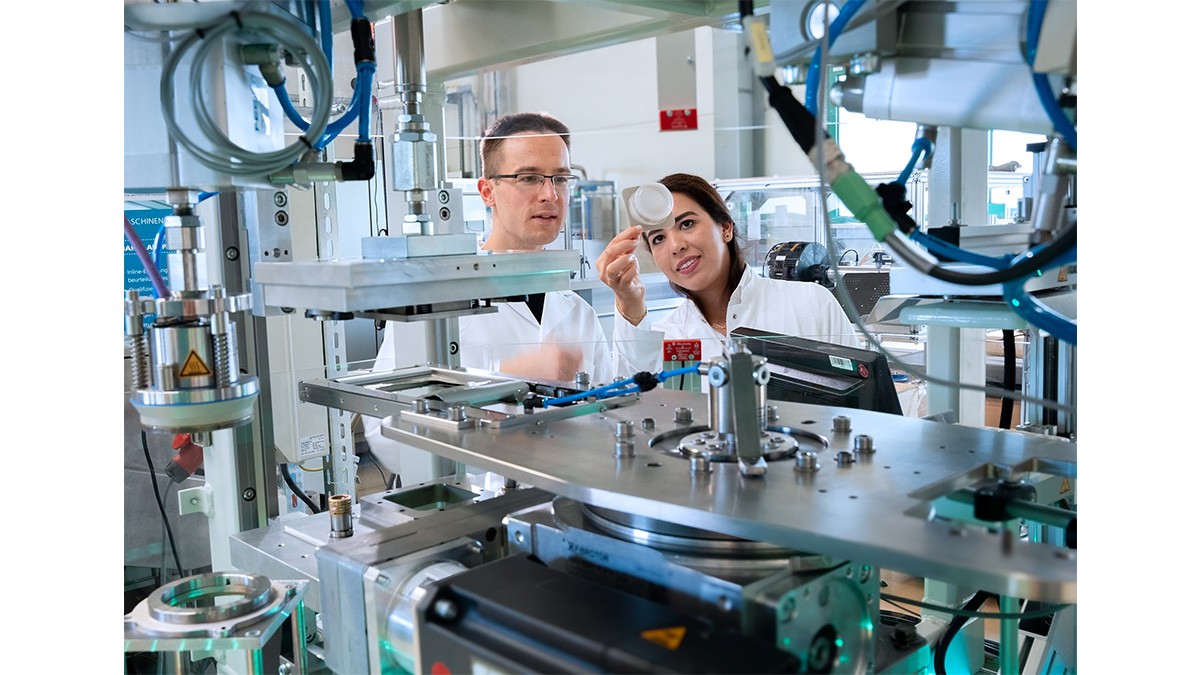AI as a Game Changer
Plastics are easy to process and true all-rounders among packaging materials. The other side of the coin: In 2022, each person in the European Union generated an average of 36.1 kilograms of plastic packaging waste. The amount of plastic packaging waste generated per capita increased by approximately eight kilograms between 2012 and 2022. The total volume of plastic waste in the EU therefore amounted to over 16 million tonnes in 2022. Approximately 6.5 million tonnes, around 41 percent of this, were recycled. The new European packaging directive, better known as the Packaging and Packaging Waste Regulation (PPWR), aims to reduce the growing amounts of packaging waste in the EU and halt its increase by 2030 with a functioning circular economy.
In addition, requirements for recycled materials, reusability, compostability and packaging labelling will be introduced. From 12 February 2025, PPWR will replace the previous packaging directive. This will result in more binding regulations and ensure uniform implementation in the Member States. As a result of this development, the plastics processing industry requires large quantities of recycled plastic, which must be produced under strict conditions at a competitive price.
Challenges in recycling plastic
One of the greatest challenges is the quality and price of recycled material compared to brand new plastic. This is because, to date, it has not been possible to accurately predict or define the quality or purity of secondary raw materials. Important reasons for this are, on the one hand, the impurities resulting from substances acting in the material cycle and, on the other hand, changes in the polymer and functional properties of the recycled materials that occur after recycling. This leads to changes and fluctuations in the processing and use of secondary raw materials, which in turn result in reduced quality and efficiency in the production process. In addition, their legal compliance with food and packaging safety requirements cannot yet be guaranteed. In order to avoid quality losses and complications, recycled materials are still used far too little.
What technical resources are needed and what economic challenges must be overcome in order to introduce recycled materials into the cycle in a sensible and cost-effective manner? The KIOptiPack Innovation Lab is dedicated to answering this question. The goal is to provide and validate AI-supported tools for successful product design and high-quality production of plastic packaging with a high recycled content, and ultimately to feed these tools into an application and data room. In addition, a central network platform for value creation engineering is to be established for this purpose and linked to the AI application and data room. A team at the Fraunhofer Institute for Process Engineering and Packaging (IVV) in Dresden, Germany is contributing its interdisciplinary expertise in the fields of packaging development and manufacturing, food science, sensory analysis, measurement technology, AI methods and algorithms. This makes it possible, in particular, to recycle this packaging and optimise it holistically. Once all data has been fully integrated, the AI tools suggest the best possible packaging designs for a specific product while minimising material costs.
AI helps choose the recycling method
"A shared data room is essential for better integrating recycled materials into packaging solutions," emphasises Prof. Andrea Büttner, Director of the Fraunhofer IVV. Because recycled material is a valuable resource. "However, the quality of the recyclable plastic must be right. Once plastics enter the cycle, they can, in principle, contain contaminants," says the expert. The reason for her statement: If the recycled materials are contaminated with undesirable substances such as foreign plastics, printing inks or degradation products, this can significantly impair their quality and even render them unusable. This poses particular challenges for the industry. From recyclate manufacturers to companies that produce packaging films to the food industry, there is a need for systematic data exchange and uniform terminology when dealing with plastics. This primarily concerns polyolefins – the largest group of plastics, which can undergo significant changes during processing.
"AI-supported tools are required to ensure that recycled materials can be processed further to a high standard. Our modular software solutions developed at Fraunhofer IVV support the characterisation and analysis of material properties and link information flows so that a suitable field of application can be identified for recycled materials with fluctuating properties," says Dr Matthias Reinelt, Head of the Shelf Life and Packaging Modelling Group at Fraunhofer IVV. "Our AI tool for packaging production uses as much information as possible about the recycled material to determine the optimal processing method. This ensures that, at the end of the process chain, a sustainably produced yoghurt pot with a uniform wall thickness and the desired shape ends up on the shop shelf," says Reinelt. The researchers also evaluate the quality of the recycled materials using chromatographic analysis methods, which also utilise AI tools for improved substance identification. This is to prevent unsuitable or contaminated recycled materials from entering the cycle despite good sorting. In some cases, the optimisation tools and the networked data room are integrated directly into the production process of the respective manufacturers. This enables real-time suggestions for further processing depending on the recycled material used in the machines on site.
New tools address the recycled material gap
Although the use of recycled materials in plastic products is steadily increasing, the amount of recycled plastics will still not be sufficient to meet the legally mandated recycling quotas. Experts expect the gap between supply and demand for recycled plastics to grow in the coming years. By 2030, demand for recycled materials is expected to exceed supply by 30 percent. "We can't close the recycling gap in the plastics sector in the long term with isolated solutions. Our AI-powered optimisation tools, which interlink material and information flows, address this problem. We connect stakeholders from a wide range of industries and try to respond more effectively to resource shortages," summarises Prof. Andrea Büttner.
Further information
www.ivv.fraunhofer.de




